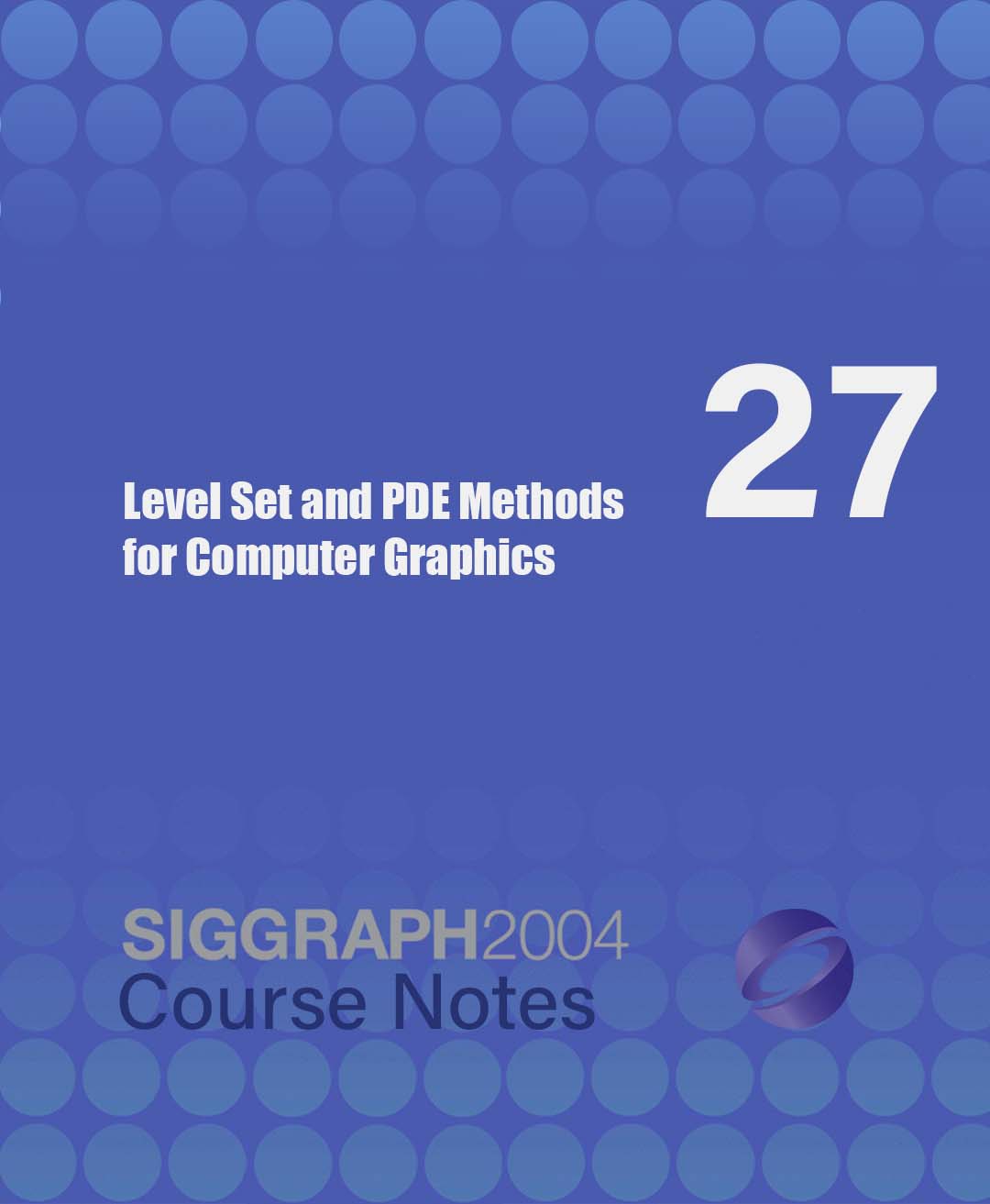“Level Set and PDE Methods for Computer Graphics” by Breen, Fedkiw, Museth, Osher, Sapiro, et al. …
Conference:
Type(s):
Entry Number: 27
Title:
- Level Set and PDE Methods for Computer Graphics
Course Organizer(s):
Presenter(s)/Author(s):
Abstract:
Prerequisites
A working knowledge of calculus, linear algebra, computer graphics, geometric modeling, and computer vision. Some familiarity with differential geometry, differential equations, numerical computing and image processing is strongly recommended, but not required.
Intended Audience
Students, researchers, and practitioners who want to learn about level set/PDE methods in order to employ them in computer graphics, image processing, and geometric modeling applications.
Description
Level set methods, an important class of partial differential equation (PDE) methods, define dynamic surfaces implicitly as the level set (iso-surface) of a sampled, evolving nD function. This course is designed for researchers who are interested in learning about level set and other PDE-based methods, and their application to computer graphics, computer animation, geometric modeling, and computer vision. The course material is presented by several recognized experts in the field and includes introductory concepts, practical considerations, and extensive details on a variety of level set/PDE applications.
The course begins with preparatory material that introduces the concept of using partial differential equations to solve problems in computer graphics, geometric modeling, and computer vision, including the structure and behavior of several different types of differential equations (for example, the level set equation and the heat equation) as well as a general approach to developing PDE-based applications. The second stage of the course describes the numerical methods and algorithms needed to actually implement the mathematics and methods presented in the first stage. The course closes with detailed presentations on several level set/PDE applications, including image/video inpainting, pattern formation, image/volume processing, 3D shape reconstruction, image/volume segmentation, image/shape morphing, geometric modeling, anisotropic diffusion, and simulation of natural phenomena.




